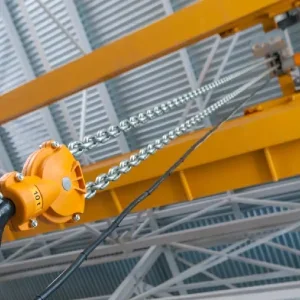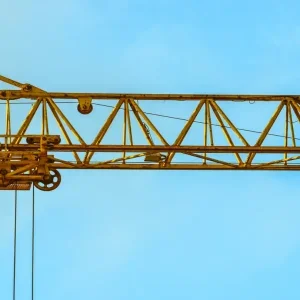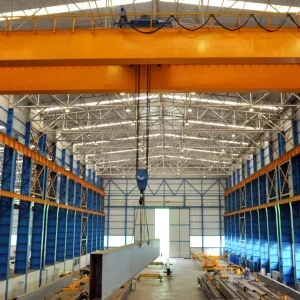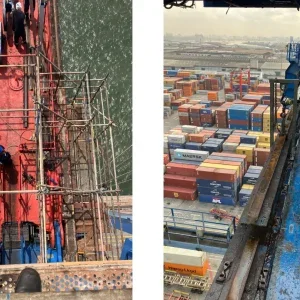Hoist understands that the project is worth £7.5m (10.5m Euro), but Konecranes UK managing director Gordon Adie would not confirm this.
Much of the project remains secret. Adie said that Konecranes UK has signed a confidentiality agreement that includes elements of the UK’s Official Secrets Act, which prevents access to information for reasons of national security.
Two large cranes in the Devonshire Dock Hall (DDH) will be upgraded to a working capacity of 150t. The cranes help manufacture the Astute submarines.
According to an article in the January/February BAE Systems in-house magazine Wavelength, these were the original capacities of these cranes, but were down-rated to 115 and 105t capacity during a safety review because of their proximity to nuclear material.
The cranes were originally installed 20 years ago by Carruthers, now Konecranes UK, said Adie.
“They are not hot-rated cranes,” Adie said – they are not intended to lift radioactive material. But he added that they will be working over the fuelled submarines.
The cranes are designed to be single-failure proof, meaning they have redundant equipment to protect against one failure that might lead to a load drop.
Adie said the cranes were designed only for this job. “They are one-offs,” he said. He would not elaborate on how they work.
The refurbishment work will also include strengthening the crane structures, replacing crane hoist trolleys, upgrading crane control systems and providing enhanced safety features, according to Wavelength.
KCI Konecranes is also refurbishing three smaller cranes that had been down-rated. The refurbisment job will return their capacity to 12.5t, according to Wavelength.
The refurbishment programme is due to be completed in August 2006, and the first nuclear lift is scheduled for the beginning of 2007, it said.
BAE Systems chose to refurbish the old cranes rather than buy new ones partly because of the lower cost, it said.
The upgrade comes as part of a £20m upgrade project at the northern England manufacturing site, which will include work on the site’s ship lift and production shop areas, according to a recent article in Professional Engineering magazine.






